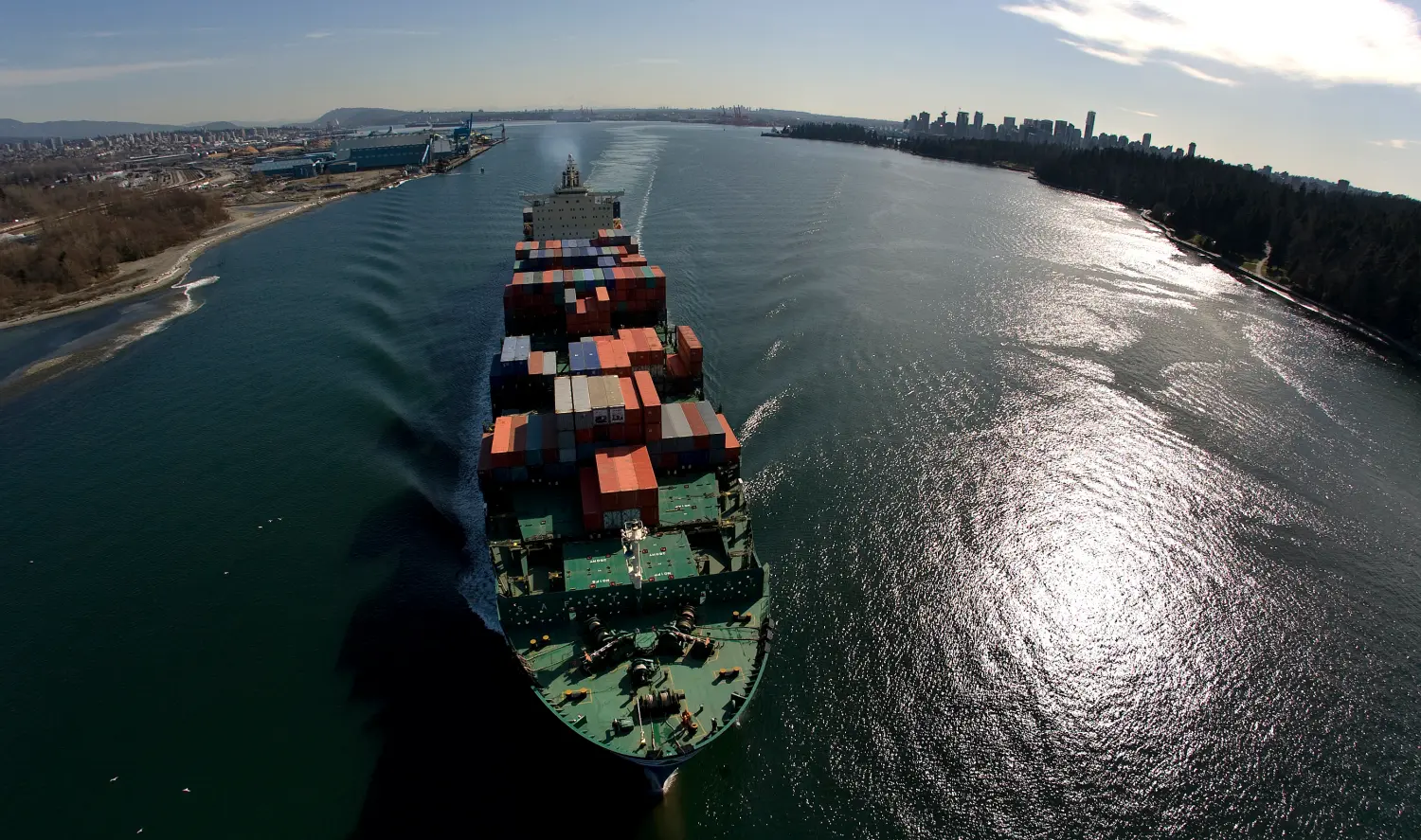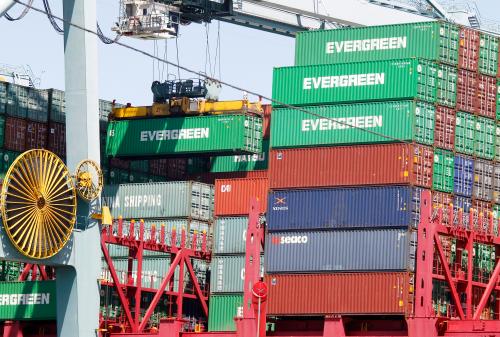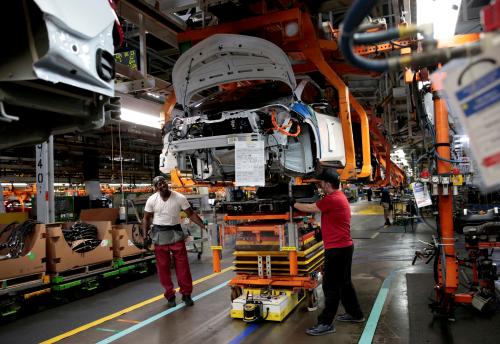The Metro Freight research series assesses goods trade at the metropolitan scale. It uses a unique and comprehensive database to capture all the goods moving in and out of U.S. metropolitan areas, both domestically and beyond. The reports in the series describe which goods move between metropolitan areas, how they move via different modes of transportation, and uncover the specific trading relationships between U.S. metropolitan areas as well as their global counterparts.
Reports
The great port mismatch: U.S. goods trade and international transportation (PDF)
Adie Tomer and Joseph Kane, June 2015
America’s international ports are a vital conduit between the international marketplace and domestic producers and consumers, but there is an information gap when it comes to ports’ specific role in the country’s trade networks. This paper uncovers an intense spatial mismatch in the country’s international flow of goods: A small group of port complexes handles the vast majority of all trade flows, but those ports primarily serve domestic markets besides their own.
Explore data »
Press release (PDF) »
Metro Modes: Charting a Path for the U.S. Freight Transportation Network
Joseph Kane and Adie Tomer, June 2015
Trucks, airports, railroads, waterways, and pipelines represent the foundation of the country’s freight network. Yet congestion costs and tight budgets require that we prioritize freight investments. Understanding the types of goods moved by each mode—and the industries supported by these movements—is a crucial step for regions to take to address their freight challenges. This report illustrates how trucks serve as a backbone for the nation’s entire freight network, but also reveals how several other modes are essential to support the exchange of goods.
Press release (PDF) »
Establish a national freight investment program to improve trade and economic performance (PDF)
Adie Tomer and Joseph Kane, February 2015
Goods trade is highly concentrated and interconnected throughout the U.S., relying on a distinct set of markets and freight infrastructure assets to deliver broad-based economic growth. Due to high levels of interstate trade, the federal government has a unique responsibility to support more efficient freight movement. However, the country still does not have an investment vehicle to prioritize key corridors, productive rural areas, and major metropolitan hubs. This policy proposal describes how the federal government should establish a multimodal freight investment program that includes a combination of formula and competitive grants to drive regional growth.
Mapping freight: The highly concentrated nature of goods trade in the United States (PDF)
Adie Tomer and Joseph Kane, November 2014
In today’s global economy, metro areas forge the key physical connections that bind different markets together. Yet, little is known about where individual metro areas trade their goods. This report explores the major trade corridors connecting different regions of the country, revealing the importance of particular places in the nation’s freight network. Since the most valuable corridors are often concentrated among the nation’s largest metropolitan areas, policymakers must fundamentally reorient freight policy to best support trade across the country.
Explore data »
Download data (ZIP) »
Metro-to-metro: Global and domestic goods trade in metropolitan America (PDF)
Adie Tomer, Robert Puentes and Joseph Kane, October 2013
In 2010, the United States moved more than $3 trillion in goods internationally or nearly $8.8 billion, on average, each day. However, an exclusive focus on national trade fails to recognize the extreme regional variety in production, consumption, and goods exchange. This discussion paper marks the first time metropolitan areas can begin to explore their place in domestic and global goods trade networks by tracking which regions generate the most international trade and the level of trade within the much larger domestic marketplace.
Download data (XLS) »
Metro freight: The global goods trade that moves metro economies (PDF)
Adie Tomer, Robert Puentes and Joseph Kane, October 2013
This primer establishes the economic rationale for metropolitan goods trade, describing why, how, and what these areas exchange with each other. One of the lessons from the Great Recession is the need to grow and support the tradable sectors, typically manufacturing and high-end services, of our metropolitan economies. But to drive these tradable sectors, metropolitan areas need physical access to markets. Metropolitan freight connectivity enables this access and the ensuing modern global value chains. Without it, trade cannot occur.
Interactive Data
<!–
Download metro area freight profiles (PDF)
–>
<!–
Data from “The Great Port Mismatch“
–>
Blogs and other resources
Blogs
- Widening the Panama Canal and the future of global trade mapping
- The Lac-Mégantic oil spill and the future of American energy
- Redefining goods trade, metro by metro
- Why isn’t there a more robust ‘local energy’ movement?
- Chicago: Manufacturing and freight co-location to drive economic growth
- Minneapolis-Saint Paul’s intersection of freight and economy
- San Diego: Linking up innovation and local manufacturing
- Assessing Atlanta’s position in global commerce
- Does the global t-shirt mark the end of American textiles?
- Is the country’s infrastructure ready for the energy evolution?
- Portland’s evolving role in global goods trade
- Building a national freight policy, one proposal at a time
- Water resources bill: What it means for ports and place in American freight policy
- Can trade and logistics remake Florida?
- Place central to metropolitan trade and freight investment
- What the top eight freight corridors tell us about trade
- Relieving congestion to boost metro trade
- Keystone XL or not: How does America move oil now?
- How the West Coast port strike Is hurting metro trade
- It’s time for a national freight investment program
- Latest deal on Detroit-Canada bridge a huge boost for metro trade
Resources









